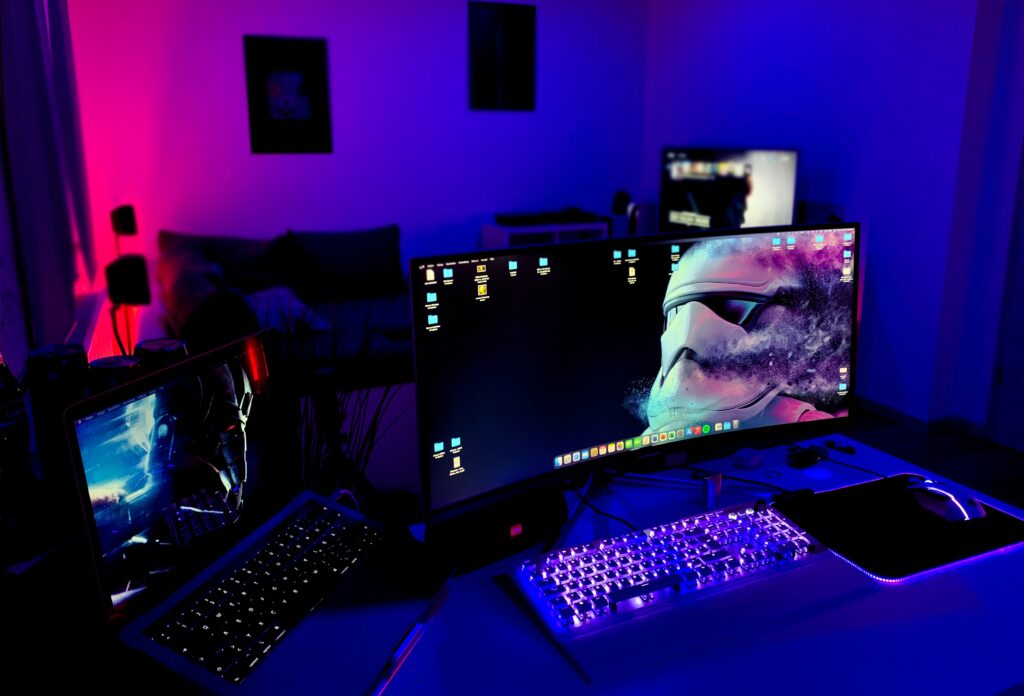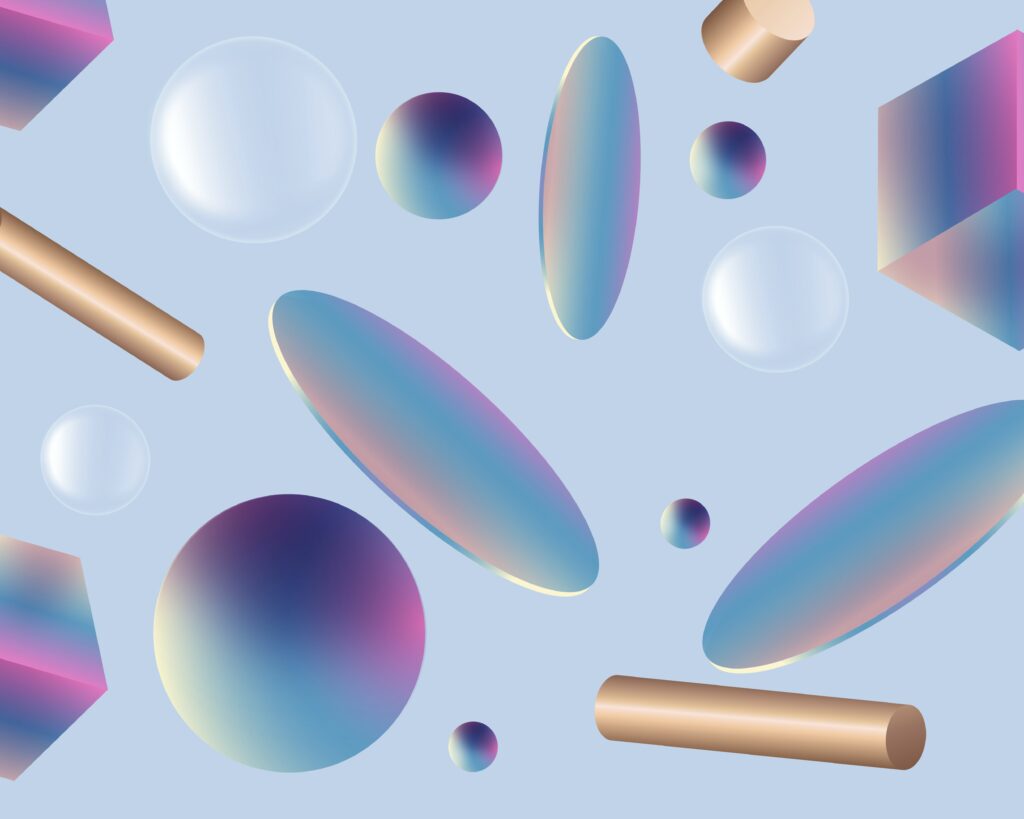The motion design industry is on the brink of being reinvented several times over in the next few years. Here’s how these innovations work and how they’ll affect you.
For anyone who’s been paying attention, the evolution from Disney cartoons to Pixar animation to where we are today has been a fast one. Motion design gets better each day, and the future of motion design is looking especially bright right now because of advancements in the works.
Motion design is the ability to apply graphic design principles through animation and visual effects, resulting in film and video assets. There are seasonal trends that represent slight change, and then there are entire industries that will be invented.
The motion design industry is changing. Virtual reality and augmented reality are exploding, AI-powered tools like Midjourney are becoming commonplace, and the lines between what we consider real and unreal are rapidly blurring.
It’s clear that there will always be value in being able to tell a story with pictures. If technology continues to advance at this pace, we see the need for motion design accelerating significantly and will continue to offer specialized courses for our users. Keeping up (and even getting ahead) will be of the utmost importance to maintaining a thriving career.
The motion design industry is on the brink of being reinvented several times over the next few years. Some innovations are already present in the market and others won’t be here in force for another 2-5 years. Here’s how these innovations will affect motion designers.
Creatives Haven’t Stopped Being Creative… Animated Features Keep Innovating
The future of motion design is a big, beautiful, animated world with a lot of movement. Linear trends like quality improvement and changing consumer tastes still require innovation, and creatives keep finding new ways to bring stories to life. One example most will have heard of is the Mandalorian, Disney Plus’ latest addition to the Star Wars universe. Using Epic Games’ Unreal Engine, they were able to film with dynamic digital sets built with massive LED walls.
This gave them the ability to react and manipulate the digital content in real-time, enabling a whole new level of live production.
Picture a 20-foot high, 270-degree LED video in a semicircle around the set. This creates much more life-like filming and allows for on-the-set adaptation to fit the changes the director needed.
It may have cost an estimated $12.5 million per episode to film, but the result was stunning and pushed ahead technology that will be used on other projects.
How Does Artificial Intelligence (AI) Change Design Work?
AI-powered design is the next step in the evolution of motion design. Motion designers can already use AI to quickly create visually stunning animations, digital assets, and environments. With AI-powered design, designers don’t have to be programmers or technical experts!
Machine Learning is going to be a force multiplier for effective motion designers, because of the power to handle the tedious parts of motion design work. The goal is to drastically reduce the time in-between conception and production of an idea. Think of what happens when a mistake can be easily fixed without needing to duplicate work. The jump in efficiency will be similar to when graphic designers evolved past pen and paper.
AI uses machine learning algorithms and deep neural networks to process data about human beings and the world around us. This allows computers to learn from experience without being explicitly programmed by people.
In this sense, it’s not that different from how your brain learns new things automatically without having someone tell you exactly how everything works every time something new happens around you. You just get used to things over time.
Adobe Sensei is the prevalent tool enabling the widespread use of AI in motion design. Its goal is to make this whole process effortless. Features like intelligent image discovery, content personalization, and even business intelligence are enabling, not replacing, motion designers. Of course, there are many other tools that can be used for specific use cases.
These tools are already here, and the best thing a designer can do right now is learn a new tool well enough to fit it into their workflow for future optimization. At a point, we expect ML to start suggesting ways you can work better or faster, all based on what they’ve seen you do in the past.
Use NFTs to Earn in Novel New Ways
Digital art is the next big innovation in design creation and design work. Non-Fungible Tokens (NFTs) are digital assets that are unique, each with their own set of attributes and history.
It’s important to separate NFTs into “crypto art” and the overall model. Digital art is an innovation in the medium, but the overall model will allow for innovation in how designers earn. Verified ownership of the piece with programmable characteristics will be huge in the future. It has value because it’s rare and can be used to do things like make purchases or access certain services.
With digital art, the top thing to notice is the value placed on ownership. People care about the rights that come with the art, not just the art. In the same way that a “print” copy of the Mona Lisa would be worth way less than the actual thing, NFTs are worth much more than their JPEG equivalent. CryptoKitties and CryptoPunks were two of the earliest examples of these digital collectibles, and Beeple was the first to go mainstream.
Where GIFs have accelerated, this medium will go even further. At this point, crypto art marketplaces have daily volumes over $100 million. Motion design NFT pieces are in high demand right now, and this opens up the possibility for motion designers to earn money for their personal work, rather than just client work. Diversifying income streams is great and will allow designers to finally earn more.
The medium is interesting, but what makes NFTs especially useful for motion designers are the new monetization methods available. We’re already at a point where royalties, community access, and partnerships can be hard-coded into the NFT, bringing much more value to the creator.
The metaverse is a virtual version of the Internet that exists on a global scale. It will be a place where we can live, work, play, create and share content, and interact with other people.
It will take social media to the next level by adding a physical element to what consumers use to connect with others. Imagine live concerts in virtual reality, or even social gatherings – everything is going to change.
As an innovation, the metaverse will come with wild uses for the Internet. Motion design became infinitely more applicable when widespread use of the web began, and the metaverse will do that all over again. Which makes it the perfect playground for motion designers.
As we mentioned with NFTs, there are ways to earn royalties for NFTs created in the metaverse, and each platform has a development fund, as well as frequent hackathons. These are both ways that you can get paid to enter the space and learn more about it.
The metaverse is synonymous with virtual reality, which is also where we expect to see significant advancements. Motion designers are already able to create full-scale experiences by exploring virtual reality with animation or live-action, 360-degree videos, and motion graphics that put the viewer inside your story.
The same applies to augmented reality (AR) – think of Pokemon GO – where designers enhance the user’s physical world with computer-generated designs responding to user input.
In the end, storytelling will get stronger, and mass consumption entertainment will be affected significantly at the same time.
What Are You Doing to Keep Up With the Reinvention of Motion Design?
None of this is a fantasy. The motion design industry is on the brink of being reinvented several times over the next few years. Hopefully, you now understand how these trends affect you and how you can put them to work in your favor.
The future is unpredictable, but by acting today and getting educated, motion designers can capture value developing in these new areas. AI, VR, AR, the metaverse, and NFTs are all in their first or second inning. They are here and work is being done, but they haven’t reached mainstream adoption or use yet. Now it’s up to enterprising motion designers to capture these benefits by taking action.
To keep getting better, you need to go outside your box. Fees will go to the designers who stay ahead of the trends and work hard to be thought (and action) leaders. They’ll be able to position themselves better, get higher quality clients, and do better work.
As technology advances, we see the need for motion design (and motion design skills) accelerating significantly. This is just as true for people who want to create their own stories as it is for those who want to work in the business of creating stories for others.
This isn’t just a trend; it’s an entire industry that will be invented.
For the enterprising motion designer, Motion Design School also offers a ton of specialized courses for users of all levels. Check out our courses page and see what works best for you. No one can predict what tools we’ll be using in 5 years’ time, but we can look at new inventions and imagine how we might use them. The future of motion design is exciting, and it’s here to stay!
Related Articles:
How to Start a Career in Motion Design?
If you’re going to get involved with motion design, it’s good to have an idea of how much you’re going to make. Learn the average motion designer salary, as well as options for freelancer motion designers, and you’re going to be pleasantly surprised.
How Do I Become a Motion Designer?
Learn the basics of what motion graphics designers do, how to get started in vector animation, and what you can do right now to start building your career and becomea motion designer!
What’s your favorite SM channel? Because we cover them all.
Join in based on what interests you:
2.8K followers and growing
Twitter is where we talk crypto, NFTs, Metaverse and latest MDS developments in this space.


